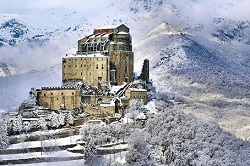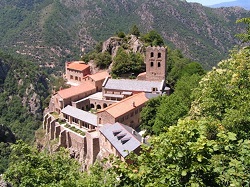
UNITA starting grants on research - call on Tourism and cultural heritage in a digital world
Project objectives and activities

In all cultures and religious traditions, the mountain has represented a preferential connection between the human and divine dimensions. Indeed, it is a privileged space of interconnection between the immanent and the transcendent.
In Europe, sacredness was already connected to altitude in pre-Roman times, a factor characterising numerous places of worship, such as those attested in the Alpine and Pyrenean areas. The Romanisation of these areas contributed to projecting the sacredness of certain spaces (mostly linked to the perception of a divine presence in the forms and forces of nature: waters, woods, rocks, caves) into a broader religious and cultic horizon. Later, the advent and spread of Christianity led to a complex process of assimilation and reworking of many of these sacred spaces, which were transformed into sanctuaries dedicated to worshipping saints and the Madonna.
The location of these and other sanctuaries built over a vast period between the early Middle Ages and the contemporary age (a time, the latter, marked by a particular incidence of Marian apparitions in the Alpine and Pyrenean areas: La Salette and Lourdes are only the best-known cases) follows and, in a certain sense, contributes to orienting the dynamics of political, cultural, economic, and social development of mountain territories. Mountain sanctuaries are mainly located near transit areas, road junctions, and communication axes: thus, their tendency to ‘mark’ the territory takes on a significance beyond their strictly religious function.

In the Middle Ages and modern period, the sanctuaries raised in the Alpine and Pyrenean areas were crossed by pilgrimage itineraries and flows directed towards the great devotional destinations (the Holy Land, Rome, Santiago de Compostela). They became intermediate devotional stages of great pilgrimages, and epicentres of an economic, productive, and logistical micro-system aimed primarily at the needs of pilgrims, but progressively autonomous from them (think, for example, of the tendency of sanctuaries to become venues for fairs and markets).
Moreover, the mountains have often represented a fertile environment for the settlement of heterodox communities (such as the Waldensians in the Cottian Alps, which became a sort of mountain “ghetto” in the modern period). In those places, these communities have sometimes sedimented a memory of their extinct presence (as in the case of the Cathar communities extirpated on both sides of the Pyrenees, or the Dolcinites eliminated in the Lombardy valleys, in the Biellese and Valsesia areas) or reactivated in celebratory and identity key. Thus, since the Middle Ages, the Alpine and Pyrenean areas have been marked by the presence of religious and spiritual experiences judged heretical by the Catholic Church, repressed and persecuted by it. It is precisely this religious, cultic and ethnic heterogeneity that has made the territories considered by this project rich places of cultural and tourist interest.
The project builds on this complex historical and geographical framework. The objective is to highlight the potential for cultural tourism of places and spaces linked to the memory (material and immaterial) of the different religious traditions that have been sedimented over the centuries in the Alpine and Pyrenean areas.
(1) It is therefore first and foremost a matter of identifying, through a synergic comparison of the sensitivities, skills and methodologies of the scholars involved (experts in archaeology, ancient, medieval, modern, and contemporary history, history of Christianity) the different typology of memorial places (sanctuaries, places of worship, buildings, or natural spaces) in the two reference areas.
(2) Next, to hypothesise the definition of itineraries capable of creating functional connections to the fruition of the territories aimed at enhancing their historical, artistic, natural and landscape heritage. While the current itineraries of religious culture in the Alpine and Pyrenean area tend to enhance a specific experience or religious confession (think of the GTA itinerary in the Cottian Alps linked to the Glorious Repatriation of the Waldensians, recently retraced), this project wants to connect different experiences, enhancing their common points, towards a future overall and shared definition of the European mountain religious framework.
The results of this preliminary project, to which all the research units involved in the project will apply themselves, may form the starting point for further and more articulated projects, also with a view to the realisation of proposals for itineraries (physical and virtual) accessible through digital humanities resources and potentialities.
Un premier colloque, où interviendront Christophe Gauchon, Isabelle Parron, Laurent Ripart et Apolline Troyes aura lieu à Biella (Italie) les 28 et 29 mai 2025 :
International Conference "Spazi sacri e luoghi di memorie nei territori montani d’Europa: conoscenza, tutela e valorizzazione del patrimonio culturale" - Biella, Città Studi, 28-29 Maggio 2025

Un second colloque suivra à Saragosse (Espagne) en septembre 2025.

